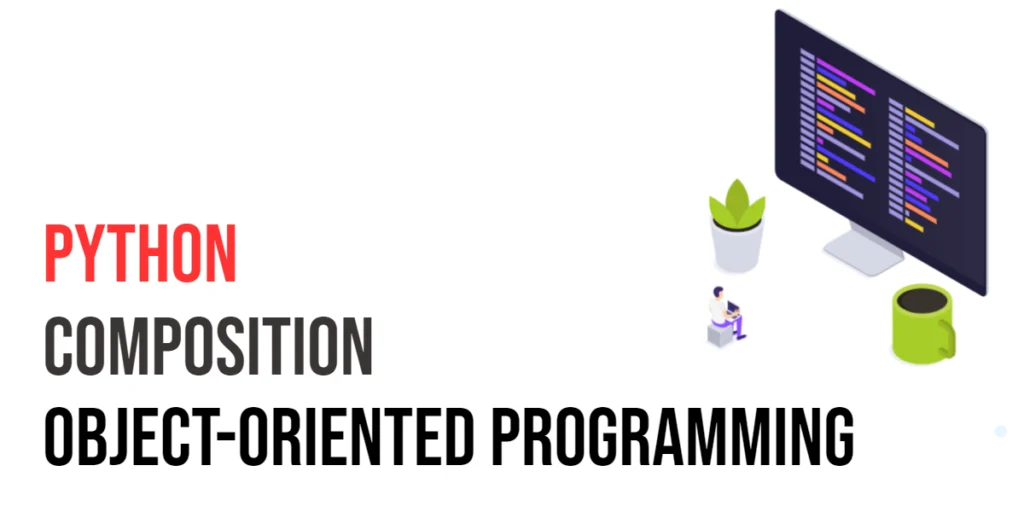In Python, string templates provide a powerful and flexible way to dynamically insert values into strings. String templates allow you to define a string with placeholders, and then replace those placeholders with actual values at runtime. This is especially useful when working with strings that need to be constructed based on variable data, such as user input, data from files, or even generating messages and reports.

with hands-on learning.
get the skills and confidence to land your next move.
Using string templates is more convenient and readable compared to manually concatenating strings or using complex formatting techniques. They provide a clean, organized way to manage dynamic string generation, making code easier to maintain and debug.
In this article, we’ll explore how to use string templates with Python’s string.Template class. We’ll cover common use cases like full substitutions and partial substitutions, where some placeholders might not have corresponding values. We’ll also dive into custom delimiters and other useful techniques that can make your string manipulation more efficient and effective.
Using the string.Template Class
The Template class, part of Python’s string module, provides a straightforward way to create strings with placeholders that can be dynamically replaced with values. It offers a safer and more readable approach to string formatting compared to other methods like string concatenation or % formatting.
To use the Template class, you first need to import it from the string module. You can then create a template by defining a string with placeholders marked by $. To replace these placeholders with actual values, you use the substitute() method.
Basic Example
from string import Template
# Creating a Template object with a placeholder
template = Template("Hello, $name!")
# Performing the substitution by passing a dictionary or keyword arguments
result = template.substitute(name="Samantha")
# Output the result
print(result) # Output: Hello, Samantha!In this example, the placeholder $name in the template is replaced with the value "Samantha", producing the string "Hello, Samantha!".
This method of string formatting is particularly useful for generating strings dynamically, such as greeting messages, reports, or even generating URLs or paths based on user input. The substitute() method makes it easy to replace one or more placeholders with values at runtime.
Partial Substitutions with safe_substitute()
In some cases, you may not have all the values needed for every placeholder in a template. While the substitute() method will raise an error if a placeholder is missing a corresponding value, the safe_substitute() method allows for partial substitutions. If a placeholder doesn’t have a value to substitute, it will be left as is, without raising any errors.
You can use safe_substitute() when you want to perform substitutions but don’t necessarily have all the values ready for every placeholder. If a placeholder is missing, it will remain unchanged in the resulting string.
from string import Template
# Creating a Template object with multiple placeholders
template = Template("Hello, $name! You are $age years old.")
# Performing a partial substitution by providing only the 'name'
result = template.safe_substitute(name="Edward")
# Output the result
print(result) # Output: Hello, Edward! You are $age years old.In this example, the placeholder $name is substituted with "Edward", but the placeholder $age does not have a corresponding value. As a result, $age remains in the final string instead of raising an error, and the output is "Hello, Edward! You are $age years old.".
Using Placeholders in Templates
In Python, the string.Template class uses placeholders to dynamically insert values into strings. These placeholders are represented by $variable_name, where variable_name is the name of the placeholder that will be replaced with a value.
You can substitute the values of placeholders in a template using the substitute() method, where you pass the variables and their corresponding values as keyword arguments.
from string import Template
# Creating a Template object with placeholders for balance and status
template = Template("Your balance is $balance and your status is $status.")
# Substituting the placeholders with actual values
result = template.substitute(balance=1000, status="active")
# Output the result
print(result) # Output: Your balance is 1000 and your status is active.In this example, the template string contains two placeholders: $balance and $status. When we call substitute(), we provide the values for these placeholders as keyword arguments. The output is the string with the placeholders replaced by the corresponding values: "Your balance is 1000 and your status is active.".
Placeholders in templates allow for dynamic string creation, making them a powerful tool when working with user data, reports, or any other type of data-driven text.
Handling Missing Variables with safe_substitute() vs substitute()
When using string.Template, you have two methods for substituting values into a template: substitute() and safe_substitute(). The key difference lies in how they handle missing variables or placeholders without corresponding values.
substitute() Method
The substitute() method performs the substitution and raises a KeyError if any placeholder is not provided with a corresponding value. This is useful when you want to ensure that all placeholders are filled and raise an error when a variable is missing.
Example of using substitute() (raises error for missing variables):
from string import Template
# Creating a template with a placeholder for 'name'
template = Template("Hello, $name!")
try:
# Substituting with a value for 'name'
result = template.substitute(name="Stephen")
print(result) # Output: Hello, Stephen!
# Trying to substitute without providing a value for 'name'
result = template.substitute() # Raises KeyError
except KeyError:
print("Missing variable error.") # Output: Missing variable error.In this example, the substitute() method raises a KeyError if the variable name is missing during the substitution process.
safe_substitute() Method
The safe_substitute() method, on the other hand, does not raise an error if any placeholder is missing. Instead, it leaves the placeholder as it is in the string (e.g., $missing_variable) if a value is not provided for it. This is useful when you want to handle missing values gracefully without breaking the program.
Example of using safe_substitute() (does not raise error):
from string import Template
# Creating the same template with a placeholder for 'name'
template = Template("Hello, $name!")
# Substituting with a value for 'name'
result = template.safe_substitute(name="Stephen")
print(result) # Output: Hello, Stephen!
# Using safe_substitute without providing 'name' (no error raised)
result = template.safe_substitute()
print(result) # Output: Hello, $name!In this case, safe_substitute() does not raise an error if a variable is missing. It simply leaves the placeholder ($name) in the string as is. This makes safe_substitute() more flexible when handling templates with optional variables.
Using String Templates with Dynamic Data (User Input or External Data)
String templates are especially useful when working with dynamic data—like user input or information pulled from an external source (such as files, databases, or APIs). Templates allow you to create flexible strings that can adapt based on the data provided at runtime.
String templates allow you to easily insert dynamic values into strings. Whether you’re getting data from a user or pulling it from a file, string templates help format and integrate that data seamlessly into your application. This is particularly helpful when you need to personalize messages, generate reports, or create dynamic responses based on external inputs.
Here’s an example using user input to create a personalized message.
from string import Template
# Get user input for the name
name = input("Enter your name: ")
# Create a template for the greeting message
template = Template("Hello, $name!")
# Perform the substitution with the provided name
result = template.substitute(name=name)
# Output the result
print(result) # Output: Hello, [user_input]!In this example, the user is prompted to enter their name. The input is then substituted into the template using the substitute() method. The result is a personalized greeting that includes the user’s name.
String templates are a powerful tool for handling dynamic data, allowing you to create flexible, customizable outputs while keeping your code clean and readable.
Combining Templates and Default Values
In some cases, you may want to provide default values for placeholders in string templates. This can be helpful when certain variables may not always be available, and you want to ensure your templates still work without causing errors. You can combine string templates with default values using safe_substitute() or conditional logic to handle missing data.
When you work with string templates, there may be times when a placeholder does not have a corresponding value. While substitute() raises an error in such cases, safe_substitute() allows for more flexibility. You can use conditional logic or provide default values directly within the template to ensure smooth handling of missing variables.
from string import Template
# Template with a placeholder
template = Template("Hello, $name!")
# Substitute with an existing value
result = template.safe_substitute(name="Dave")
print(result) # Output: Hello, Dave!
# Substitute with a missing value (name=None)
template = Template("Hello, $name!")
result = template.safe_substitute(name=None) # Default handling
print(result) # Output: Hello, None!
# Using conditional logic for default value
template = Template("Hello, $name!")
name = None # Simulate a missing value
result = template.safe_substitute(name=name if name is not None else "Guest")
print(result) # Output: Hello, Guest!In this example:
- First substitution: The template works as expected by substituting the placeholder with the provided value (
"Dave"). - Second substitution: When
name=None,safe_substitute()doesn’t raise an error but keeps the placeholder as"None". This can be further customized, like showing"Guest"instead ofNone. - Third substitution: Conditional logic ensures that if
nameisNone, it defaults to"Guest", resulting in a more user-friendly output.
Combining templates with default values provides a flexible way to handle incomplete or optional data in your strings, making your applications more robust and user-friendly.
Partial Substitution with Default Values in Complex Templates
In more complex templates, you may want to perform partial substitutions, where only some of the placeholders are replaced, and the rest either remain unchanged or use default values. This allows flexibility in handling missing data for specific placeholders while still generating a meaningful result.
Partial substitution means that you provide values for some placeholders while leaving others as-is, or you may want to use default values for missing variables. The safe_substitute() method is particularly useful for this because it doesn’t raise an error if some placeholders are not provided with values. This is ideal for templates that are dynamically generated or involve optional fields.
from string import Template
# Define a complex template with multiple placeholders
template = Template("Hello, $name! Your score is $score, and your rank is $rank.")
# Partial substitution where some variables are provided, and others are missing
result = template.safe_substitute(name="Eve", score=85)
print(result) # Output: Hello, Eve! Your score is 85, and your rank is $rank.In this example:
- We substitute values for
nameandscore, but therankplaceholder is left missing. safe_substitute()doesn’t raise an error, and therankplaceholder remains unchanged as$rankin the final result.
Handling Missing Values with Defaults
You can further customize this behavior by using conditional logic to insert default values for missing placeholders.
from string import Template
# Define the template
template = Template("Hello, $name! Your score is $score, and your rank is $rank.")
# Define the data for substitution
data = {
"name": "Eve",
"score": 85
}
# Substitute values with defaults for missing placeholders
result = template.safe_substitute(name=data.get("name", "Guest"),
score=data.get("score", 0),
rank=data.get("rank", "Not Ranked"))
print(result) # Output: Hello, Eve! Your score is 85, and your rank is Not Ranked.In this case:
- The placeholders for
nameandscoreare filled with the values from thedatadictionary. - The
rankplaceholder is missing in the dictionary, so it gets replaced with the default value"Not Ranked".
Partial substitution with default values makes string templates highly adaptable, allowing you to create flexible outputs in applications where data completeness can vary.
Conclusion
Python’s string.Template offers a simple and readable way to create dynamic strings using placeholders. Throughout this article, we explored:
- How to use the
Templateclass for full substitutions. - How
safe_substitute()helps avoid errors when some values are missing. - Different types of placeholders and how to combine them with dynamic or user-provided data.
- How to handle default values and partial substitution.
By using string templates, you can write cleaner, safer, and more flexible string-handling code. Try mixing and matching these techniques in your own projects to make string creation both fun and powerful!







